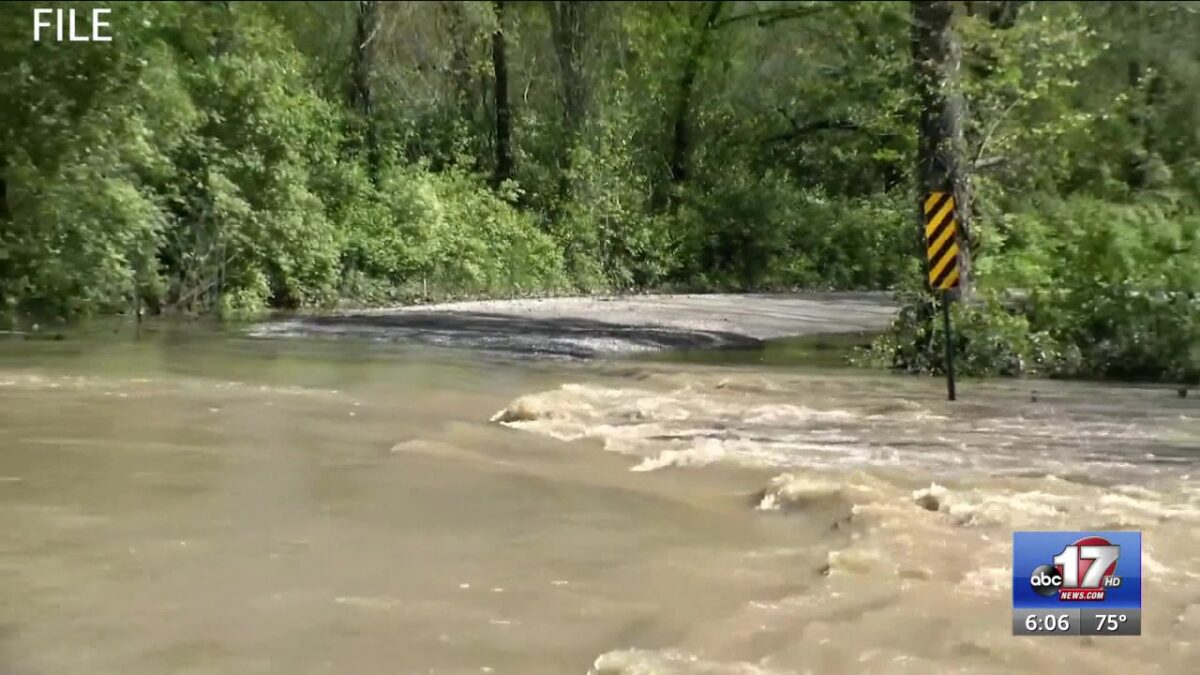Several areas in Boone County prone to flash flooding

Erika McGuire
COLUMBIA, Mo. (KMIZ)
Flashing flooding can happen anywhere within minutes and hours of intense rainfall posing a threat to life and property.
Flash flooding occurred in the early morning hours of July 4 in Kerrville, Texas, killing more than 100 people, according to reporting from CNN. Missouri Task Force 1 was deployed to Texas on Monday.
Texas Gov. Greg Abbott said Tuesday afternoon 170 people remain missing.
The National Weather Service says flash floods can be caused by a number of things but most often is due to extremely heavy rainfall from thunderstorms and can occur during to dam or levee breaks or mudslides.
Marshall Pfahler with the National Weather Service said a warning is then issued when there is an immediate threat to life or property.
“A warning that means there is an immediate threat, so that means we’re looking at the radar the estimated precipitation n the rainfall amounts so we’re expecting flash flooding imminently occurring or already occurring,” Pfahler said.
It can happen when there is too much rain for the soil to absorb and can quickly catch people off guard and put them in danger.
The situation can turn dangerous quickly if someone encounters high, fast moving water child traveling, if people are in their or homes or business, the water can rise quickly and trap them and cause property damage.
A flood risk summary report done by the Federal Emergency Management Agency in 2022 found that 1.7% of land in Boone County is considered high-risk for flooding, while the state wide median is 2.9%.
The report also found 3,947 buildings are in high risk of flood plains and 3,617 residential structures are at risk. Several areas in Boone County are considered flood-prone, including the MKT Trail that suffered significant flooding in 2021.
According to the NWS, urban areas are also prone to flooding in short time-spans and sometimes rainfall in an urban area can cause flooding faster and more severe than in the suburbs or country side.
“Pavement asphalt, building so a lot of that has to get channeled off or run off into the drainage systems as well as rivers,” Pfahler said.
Creeks and rivers are first to feel the impact of flooding.
“Smaller rivers and creeks. so when that water is running off it thats usually its first stop it enters the river system so we can see quick rises and very swift flowing water,” Pfahler said.
The National Weather Service encourages using NOAA weather radios, a nationwide network broadcasting 24/7 weather forecasts, watches, warnings including flash flood warnings.
Director of the Boone County Emergency Management Agency Chris Kelley said weather radios can be crucial during severe weather as it will alert you whether power or cell service goes out.
“Have it coded for whatever county you are in so when those warnings come out you can receive them, we have areas in Boone County that have poor cell reception,” Pfahler said, “Its the redundancy and getting alerts and getting information,”
According to Kelley not all areas in the county that have poor cell service are near flood prone areas but there are some.
Local television and radio stations are also good information resources along with social media platforms and weather and emergency apps. The ABC 17 Stormtrack Weather App is also a useful tool and will send weather alerts straight to your phone.
Additionally, people in affected areas receive Wireless Emergency Alerts directly on their mobile phones these are short, high-priority messages sent without the need to sign up.